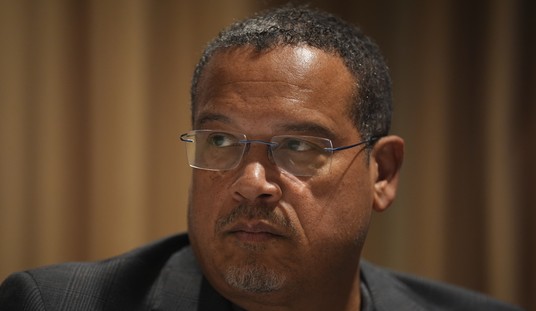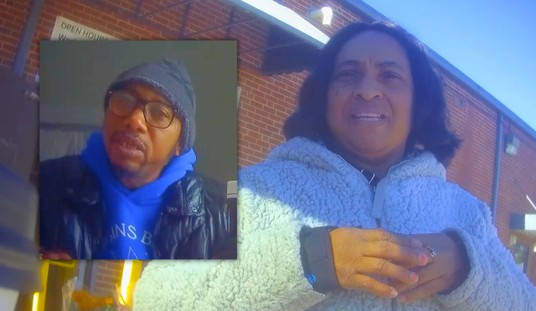When the Trump administration left office, media outlets hoped former officials would open up about the truths behind the COVID-19 pandemic. It appears that CNN’s Sanjay Gupta wasn’t prepared for quite this much truth from former CDC director Robert Redfield. In an interview this morning, Redfield told Gupta that being out of government means he “can have an opinion” — and in his opinion, the virus escaped out the lab in Wuhan rather than crossed over naturally or through wet markets.
Gupta seems a bit stunned:
Robert Redfield, the former director of the Centers for Disease Control and Prevention, said he believed the virus that causes Covid-19 originated from a laboratory in Wuhan, China — contradicting the assessment of the World Health Organization and most public health experts.
In an interview with CNN’s Sanjay Gupta that aired Friday, the former Trump administration official also speculated that the virus began transmitting within central China’s Hubei province in September or October 2019, a potential time frame more in line with mainstream scientific views.
“That’s my own view. It’s only an opinion. I’m allowed to have opinions now,” said Redfield, who served as CDC director from 2018 until the end of former President Donald Trump’s term. He is now a senior adviser for public health to Maryland Gov. Larry Hogan on the state’s pandemic response.
Regarding the origins of the virus, Redfield went on to say: “I am of the point of view that I still think the most likely ideology of this pathogen in Wuhan was from a laboratory. Escaped. Other people don’t believe that. That’s fine. Science will eventually figure it out. It’s not unusual for respiratory pathogens that are being worked on in a laboratory to infect the laboratory worker.”
American media outlets have treated this idea as if it were itself a virus that needs rapid containment. Both CNN and Politico rush to remind their audiences that WHO dismisses this theory and then assure readers that “most scientists also believe the virus developed naturally.” The problem is that they can’t show how it developed naturally, and can’t find evidence of it either.
Both outlets also admit that some experts think it’s possible that Redfield’s correct. USA Today featured a lengthy column at the beginning of the week from Alison Taylor, an investigative reporter with plenty of experience in covering lab accidents. She’s also curious why the media is so incurious about this hypothesis, which Taylor assures us has played out in real life a number of times already:
In 2003 and 2004 – in the months after intense international efforts managed to contain the spread of what was then the first type of deadly SARS coronavirus to infect people around the globe – a series of laboratory accidents threatened to reignite the epidemic that had sickened about 8,000 people in 29 countries, killing nearly 800 of them. This coronavirus virus, which emerged in 2002, causes a disease called Severe Acute Respiratory Syndrome, or SARS, that killed at a higher rate than the similarly named SARS-CoV-2 virus that causes COVID-19.
First, a 27-year-old researcher in Singapore working with specimens of West Nile Virus became infected with the SARS virus in a shared laboratory that used “inappropriate” lab safety practices. Investigators concluded the infection was caused by accidental contamination of the researcher’s West Nile Virus specimens with the SARS virus. Both viruses were discovered in a research specimen the scientist had used before becoming ill. Nobody else was sickened.
Then, three months later at a laboratory in Taiwan, a 44-year-old researcher became infected with SARS, likely by cleaning up spilled liquid waste in December 2003. He flew to attend a meeting in Singapore and didn’t show signs of illness until he returned home, developed a fever and was hospitalized. More than 70 people who had contact with him were quarantined.
“In the post-epidemic period the greatest risk from SARS may be through exposure in laboratories where the virus is used or stored,” the WHO said in an update about the Taiwan lab incident in December 2003.
As I wrote on Monday, that history raises questions as to why WHO has been so quick to dismiss the lab-accident theory. It might be because that explanation would raise questions as to what China had in mind with its coronavirus research. One former investigator at the State Department — who worked in more than one administration — thinks it was bioweapon research that they somehow fumbled:
“The Wuhan Institute of Virology is not the National Institute of Health,” David Asher, now a senior fellow at the Hudson Institute told Fox News in an exclusive interview. “It was operating a secret, classified program. In my view, and I’m just one person, my view is it was a biological weapons program.”
Asher has long been a “follow the money” guy who has worked on some of the most classified intelligence investigations for the State Department and Treasury under both Democratic and Republican administrations. He led the team that uncovered the international nuclear procurement network run by the father of Pakistan’s nuclear program, AQ Khan, and uncovered key parts of North Korea’s secret uranium enrichment. He believes the Chinese Communist Party has been involved in a massive cover-up during the past 14 months.
“And if you believe, as I do, that this might have been a weapons vector gone awry, not deliberately released, but in development and then somehow leaked, this has turned out to be the greatest weapon in history,” Asher said during a panel discussion at the Hudson Institute: The Origins of the COVID-10: Policy Implications and Lessons for the Future. “You’ve taken out 15 to 20 percent of global GDP. You’ve killed millions of people. The Chinese population has been barely affected. Their economies roared back to being number one in the entire G20.”
That’s certainly a hypothesis, one without much evidence to support the speculation. The WHO should be conducting a thorough investigation to get to the bottom of the origin, but thus far has seemed much more concerned about protecting the reputation of the regime in Beijing than its core mission — perhaps because its top executive, Tedros Ghebreyesus, owes his job to Xi Jinping.
Maybe Redfield’s outspoken analysis will force the media to start demanding more answers. One suspects, however, that it will likely just mean fewer requests for interview appearances.








Join the conversation as a VIP Member